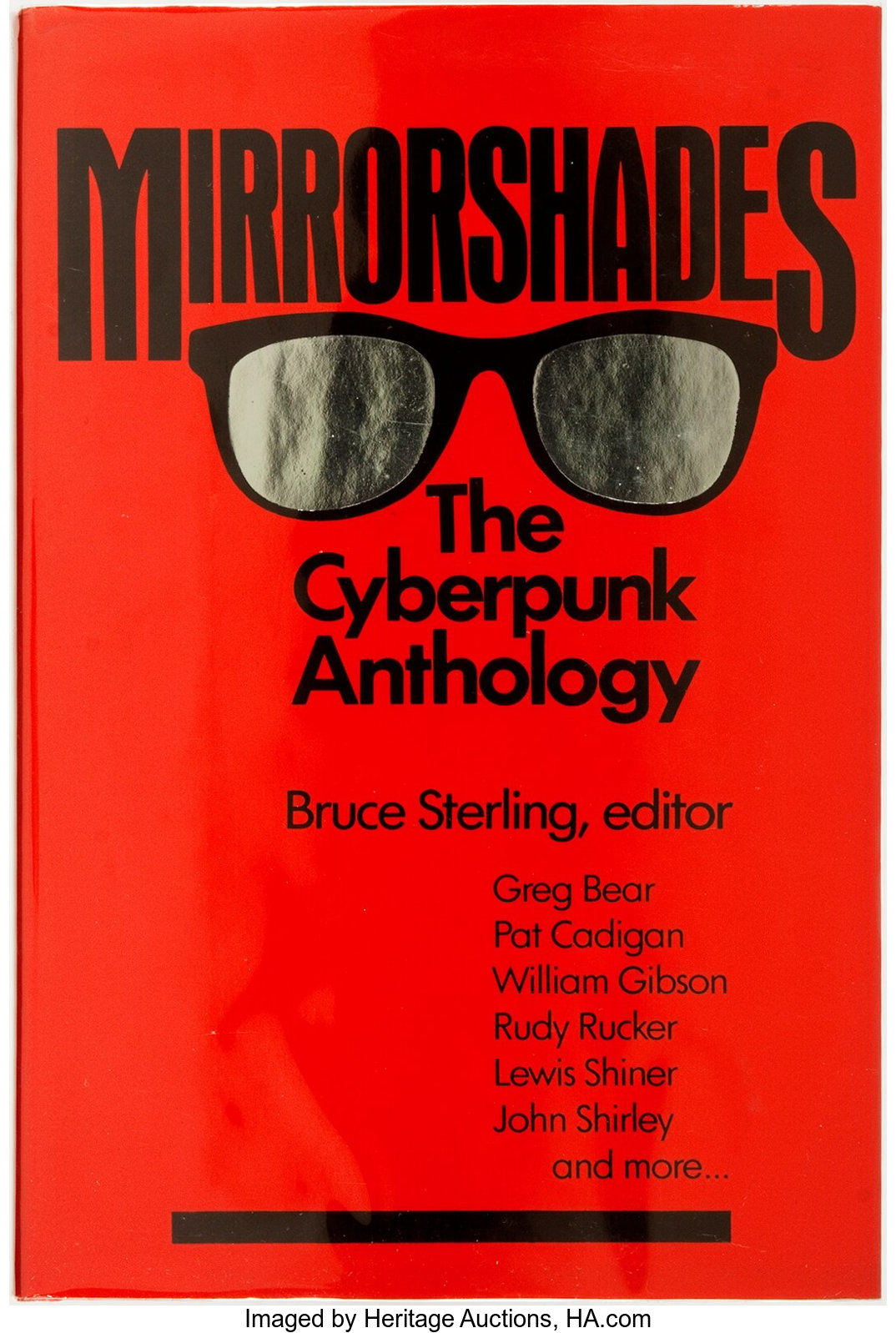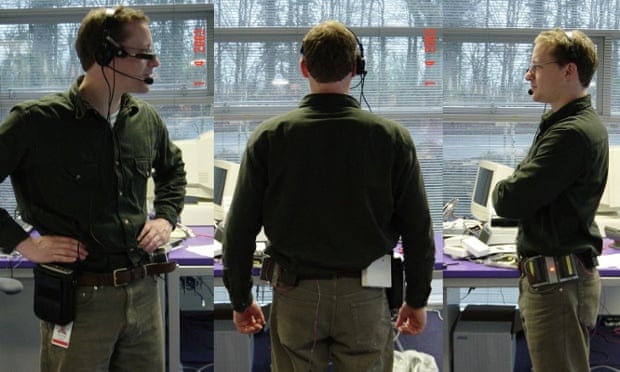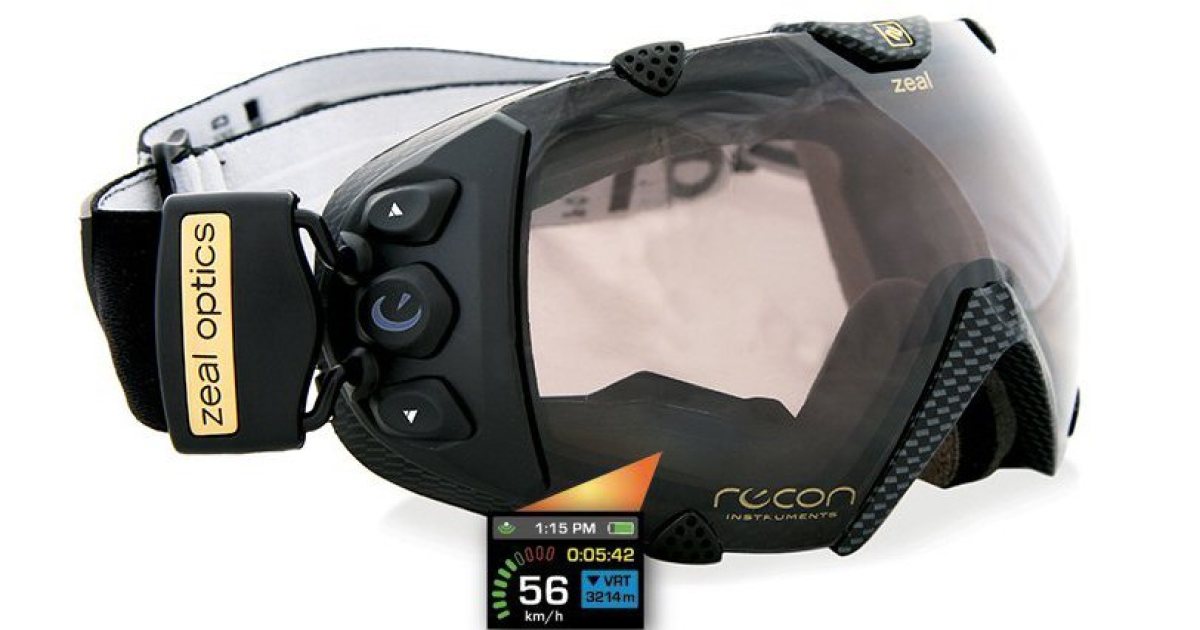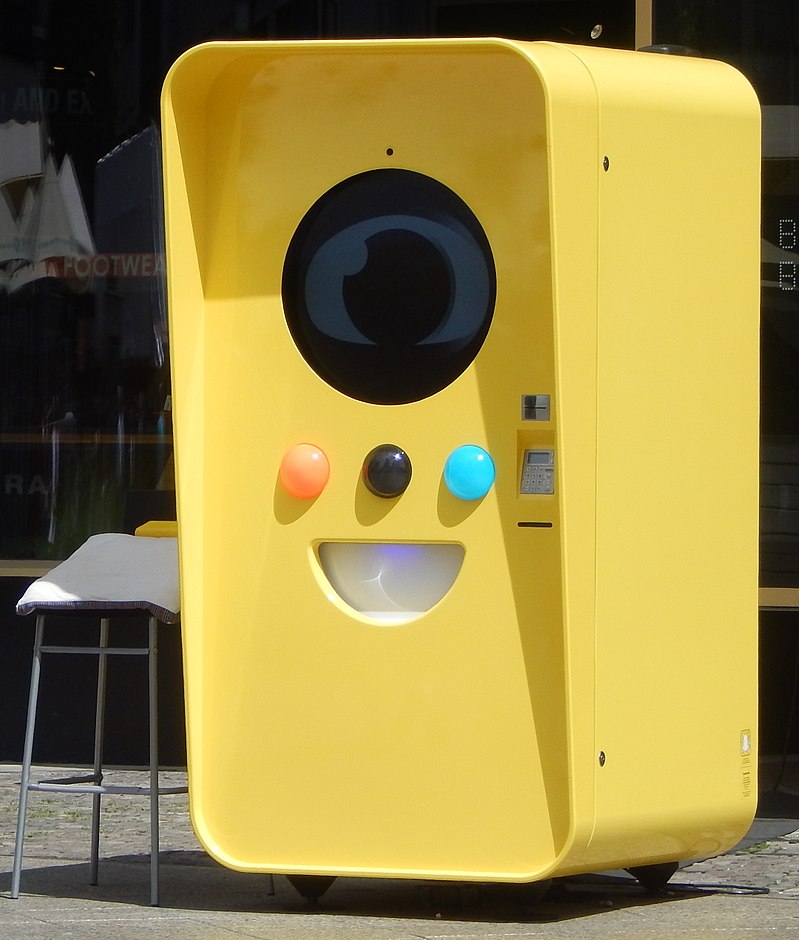Music or Noise? I’ll let you decide, but at the same time, when this sound was commonplace in many houses, thanks to Sir Sinclair, Mr William Gibson was releasing Neuromancer, one of the most essential books in the Cyberpunk genre. Molly Millions is the quintessential badass cybernetic enhanced girl within Neuromancer’s world that wreaks havoc on the streets. Her mirrorshades, surgically inlaid, augmented her vision and provided some other unspoken enhancements. Imagine Trinity from Matrix or Kusanagi from Ghost in the Shell to grasp an idea of this character. Mirrorshades became a Cyberpunk style token that resists until this day, hiding your corporate fighting intentions from the rest of the world. Ray-ban Stories are nothing like that, but if you squint enough from a distance, you might get a very fuzzy feeling of what the Cyberpunk genre promises.
Mirrorshades
September 13
On September 9th, Thursday morning, Mr Mark Zuckerberg announced Ray-Ban Stories.

Right at the beginning of the video, Mr Mark states something that resonates with every science fiction connoisseur:
“…and you don’t have to choose between interacting with a device or interacting with the world around you.”
Between the 60s and 70s, a new genre emerged from the literary masterpieces penned by Mr Philip K. Dick, Harlan Ellison, Ms Ursula K. Le Guin, and so many others that I feel ashamed for not providing the complete Hero list. A few years before these Heros came to be, Ray-Ban wayfares’ were launched, a must-have accessory for the counterculture rebel of the 60s until more famous faces made the accessory mainstream, providing a cool look when you went out to take the trash. Finally, they became too widespread even for James Dean copycats.
1984, Mr Bruce Sterling, another science fiction Hero, aggregates a set of short stories as a way of consolidating a new literary genre, born some years earlier and deeply rooted in the New Wave science fiction movement. Depending on whom you read, it was a pivotal work for the movement or a nail in the imagination coffin that should not depart from the box he created.

Looks familiar, right?
That set of wayfarers’ look-alikes were a mark of the rebel counterculture that Cyberpunks were. In Mr Bruce Sterling own words from Mirrorshades’ preface:
” by hiding the eyes, mirrorshades prevent the forces of normalcy from realizing that one is crazed and possibly dangerous.”
But they were also a technological symbol that evolved during the Second World War. Material Engineering advances allowed brands to put the first mirrored ones on shelves in the 40s, and Ray-ban started selling their own models in the 70s. Mirrorshades’ Cyberpunk stories would feature augmented humans, and a common theme would be vision as a digital interface masked by a sleek pair of Mirrorshades, sometimes surgically fused with flesh. Sometimes they would enhance eyesight, sometimes they overlay information from a remote system; other times, they just decorated reality with metadata. At the extreme, they transport the user to a different reality, out of “meat space” and into something that we might call the Metaverse.
Going through the words of the literary masters of the New Wave and Cyberpunk movement would make you wonder when such technologies could be part of our day-to-day. The Cyberpunk Mirrorshades were the cybernetic interface that extended the bland reality of “meat space” into the rebel metaverse where few were allowed, and the dimensional hop provided superhuman digital habilities for the talented ones. The Wayfarers’ fitted perfectly.
Dyson Halo
They didn’t make the cut, but they were probably the first attempt at what I would expect to be a vision wearable.

The 2001 Dyson Halo’s promised augmented reality and a Siri type of virtual assistant, and I could imagine wall street traders at their offices roaming around the room, speaking loudly to the air while sporting such a clunky system. The typical user in the street? Not really. After three years of research and investment, Dyson shelved the prototype and took patents to other appliances. I find Mr Dyson’s lack of faith disturbing, but their vacuums are pretty lovely.
Transcend
Recon Instruments closed shop in 2017 after being acquired by Intel in 2015. Probably they were the first company to put a successful “smart” eyewear device in the market. Their initial idea was a head-up display system, or simply HUD, integrated into swimmer goggles to inspect simple things like time spent, laps and basic swimmer statistics. Regrettably, a patent on such a system already existed, and the company decided to pivot sports instead of betting on a product with complicated and expensive manufacturing requirements. Moving from swimming to Skiing also brought a technological strategy shift. Instead of going with the HUD, Recon switched to a peripheral head-mounted display. The first Transcend goggles were shipped in 2010 and were targeted to winter sports fans.

The device integrated an LCD screen, GPS and environmental sensors into stylish snow goggles. Recon’s eventually created a proper decoupled HUD focusing on their technology objectives rather than the frames. With several product iterations, Jet, the last eyewear system from Recon Instruments, failed to impress the crowd after some poor reviews, and the technology wasn’t par with the expectations of such a device.
Google Glass
Enterprise Edition 2, launched in 2019, is the most recent version of the Optical Head-Mounted Display, or OHMD, from Google.

The first batch of Google glasses was shipped in 2013 for selected developers, but they were also was sold to qualified users in the same year. Although they weren’t the first ones on the market, they are the best approximation of what one would expect of an eye wearable. Google ran many trials in different domains, testing and experimenting with extracting the best value of the technology. The private consumer market proved difficult, with privacy and security being the most significant problems that couldn’t be solved at the engineering level. To be fair, it isn’t difficult to imagine the clash between Google glass users and other citizens in the most varied environments. Even visual alerts for third parties that a user is recording isn’t enough since such safeguards can be tampered with easily. In terms of fashion, they aren’t the most unobtrusive accessory, but they aren’t close to the clunky Dyson’s Halos that would probably require something like a fanny pack to pack up all the peripherals. A single band with an OHMD and earpieces that can be mounted even on top of the prescribed lens isn’t hidden but can be acceptable in many professional environments where such a tool can help task execution and real-time documentation. I saw Mr Robert Scoble playing with ones at Websummit while speaking at a forum. His actions were quite distracting for the remaining panel, and it was apparent when Mr Scoble interacted with the frame and got sidetracked with some social app in his display. The social time-slicing between real and virtual is unavoidable, but for a journalist taking statements from a politician right of a big announcement would be an interesting experiment. Real-time fact-checking with some incisive questions on the side. Who wouldn’t love it?
Spectacles
I present to you the Snapbot.

By Daylen and C.Suthorn / cc-by-sa-4.0 / commons.wikimedia.org, CC BY-SA 4.0
I wouldn’t be surprised if the designing team had some Japanese Manga inspiration when producing the vending machines that poped a pair of Spectacles for the modicum of 129 dollars.
The most recent product announcement from Snapchat builds on top of existing Spectacles that are only a pair of sunglasses coupled with one or more cameras depending on the version, transforming them into Augmented Reality, or simply AR, eyewear with the potential of using distributed computing for shared virtual experiences.

They are still in preview access for selected AR developers and enthusiasts, but Mr Spiegel’s presentation swole expectations with his short AR demo. There’s a chance that Snap brings the first rich HUD displays to the private market and making the best from the current telecommunications technological landscape that still didn’t found good targets for consumer 5G networks. The device look is very appealing to me, with lines that resemble Mr Elon’s Cybertruck, and this means that it’s something that the ordinary mortal will find ridiculous.
Ray-Ban Stories
Sunglasses with cameras, in-frame speakers. Also, you can take calls with them. That is it, in terms of “smart” features. There isn’t much more than a pair of the old Snap’s Spectacles which is quite disappointing for a company that announces the Metaverse arrival right around the corner. Well, they have voice recognition but, be careful with water splash since the pair of glasses is too delicate, so I’m guessing that some forehead sweat might become an issue.
While “mainstream” has become a naughty word in the fashion industry, this isn’t the case for consumer electronics. If too many people use the same clothes or accessories, there’s a considerable probability that the wearable will be out of fashion soon enough but having an iPhone goes beyond the fashion statement. The smartphone is a complex device with a rich feature set that keeps transforming day-to-day human habits. Add style and looks on top of that, like Apple usually does with perfection, and you get a device that most of the consumers don’t get upset about if the next in line also has one. Now, observe the interaction of two fashionistas going into a party with the same outfit. Queue drama.
While the Ray-Ban Stories are far from being a transformative device, Facebook did well partnering with a brand that produces the same fashion feeling when you cross paths with someone that owns the same accessory that you do. The frames don’t diverge much from traditional “dumb” ones in terms of style. The Wayfarers’ resemblance helps the format, even with the two visible peripheral cameras. I could use a pair, and most passersby’ wouldn’t even nudge their heads in my direction unless they got distracted with my good looks. Assuming that Mr Zuckerberg meant what he said, this is a good move towards the eye wearables become more mainstream even with such a common feature set, but a far cry from my Cyberpunk prefered aesthetics and technological transformation. Unless we are talking about giant corporations that manipulate the world into their bidding. In that case, we are happily using the tools for our own demise. Don’t take these last couple of sentences seriously. They just look cool at the end of the text if you say them out loud with an ominous voice.
Obituary - Sir Sinclair, youth waster
September 17
The title of this piece sounds like a phrase uttered by a conservative parent that thinks that computer games waste our youth. I’d have none of that, and it’s a fond way of explaining my brief interactions with a ZX Spectrum tape computer, one of Sir Sinclair creations.
I come from humble origins, but some of my friends had personal computers at their homes in the late 80s or early 90s. Some, even more than one, but the ZX Spectrum was the most common computer for “kids” with their tape loaders that could waste half an hour or more to load a program into resident memory, and they failed many times. If it died more than a couple of times, a bit of head tape reader cleaning was in demand. The loading sound is probably burned in so many minds that it will trigger anxiety attacks on the spot. Will it load?
Sir Sinclair was born into a family of Engineers and at one of the worst times and places of the last century. London in the forties with “The Blitz” at its heights. His family ran away from the war epicentre as soon as possible, establishing themselves in more bucolic locations, away from the bombs. Soon enough, Sir Sinclair showed above-average skills in mathematics and modern technology. His knowledge and abilities allowed an easy entry into the world of digital circuitry with his first creation in his late teens and many more in his twenties, when he founded Sinclair Radionics, his first company. From this point until 1982, when Timex sold the first ZX Spectrum in the United States, Sir Sinclair pinballed here and there, fighting for his creations and losing battles with contenders like Acorn Computers, a company founded by an ex-employee.
The price tag and modern features of the ZX Spectrum made the computer a fun gift for young adults that could “play” with the programming interface in their rooms. From here to indy games, it’s just a pair or years, and with this new market emerging from Spectrum “bedroom coders”, Sinclair Research, the name of Sir Sinclair company at that time, reached success even in the Soviet bloc where ZX Spectrum clones could be found everywhere.
His love for electric vehicles was well-known, and with the capital from Sinclair Research, he was able to start Sinclair Vehicles and a few other unsuccessful ventures until Sinclair Research became a three employee company in 1990. His last attempt in the electric vehicle market failed in 2010 and was still inspired by his first endeavours into electric mobility equipment.
I still remember seeing the local grocery store owner programming on a ZX Spectrum system. Without any education besides the primary Portuguese mandatory grade at the time, he read translations from the programming guides and got help from neighbours who understood English for those that weren’t translated. I played question and answer games that he developed while attending patrons and dealing with street rascals, myself included. He also did accounting with the thing, but that was way over my understanding at the time.

Farewell, Sir Sinclair and thanks for all the computers.
